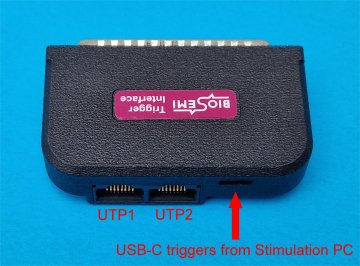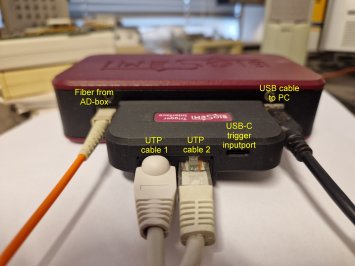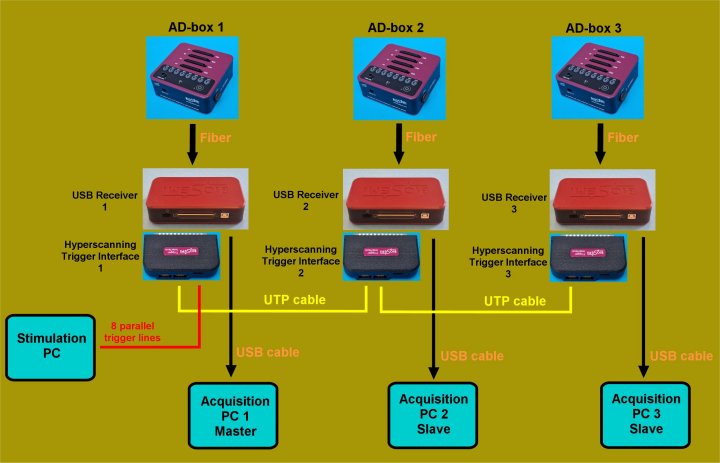 |
|
 |
|
 |
|
 |
|
 |
|
 |
|
| Hyperscanning trigger interface | ||||||||||||||
| The Hyperscanning Trigger Interface gives Hyperscanning possibilities to any Active3 system. Besides that, it also offers all the normal functionality of the standard BioSemi Trigger Interface. |
||||||||||||||
With Triggered Hyperscanning (Active3), each subject has its own AD-box and acquisition PC. The experiment is started by the Master PC. The data is synchronized with standard UTP cables connected to the Hyperscanning Trigger Interface. A Triggered Hyperscanning setup can contain an unlimited number of AD-boxes.
|
||||||||||||||
| BioSemi Hardware generated time-stamps VS Software generated time-stamps: BioSemi Hyperscanning synchronization using hardware-generated triggers is superior to the method where synchronization is achieved with software-generated triggers (for example LSL, Lab Streaming Layer. Both methods are based on the same basic idea: insert timing markers into both data streams and synchronize the data streams afterwards based on these time stamps. The fundamental difference is that BioSemi inserts the time stamps in hardware: triggers are generated by the USB receiver based on the AD-box master clock, and read by the trigger inputs of the Active3 USB Receiver and other devices. Software-generated timestamps on the other hand generate the time stamps in the acquisition PC and insert them into the data streams in the computer. This means that the time stamps are inserted after the damage has been done. USB transfer, driver, buffering and Windows all can and will affect the timing. This makes the Hyperscanning synchronization method with software-generated time stamps essentially flawed. With the BioSemi method, the synchronization accuracy is only limited by the duration of a sample. |
||||||||||||||


